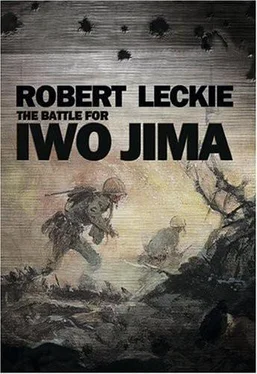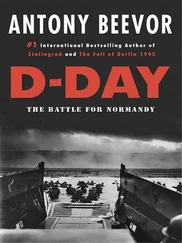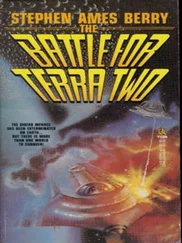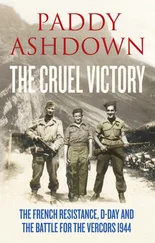So the Marines went roaring in to Iwo, and for the space of a half hour or more it appeared that their report would be “Landing: excellent.”
Chapter 3
THE TERRIBLE FIRST DAY
The only apparent difficulty on Iwo seemed to be the terraces of volcanic ash which wind and wave had heaped inland at heights up to 15 feet. Many of the armored amtracks, or “amtanks,” could not climb them. Instead, they backed into the sea again, churned out, and turned to open fire on the island.
Troop amtracks, sending up showers of sand, tried to grind through the terraces. They too became stalled, and their marine passengers leaped out to continue inland afoot. Still there was no fire from the enemy. In came the second wave unopposed. The third… the fourth… Marines trudging inland through the warm, loose sand began to hope that the Japanese had fled the island. But as the American invaders climbed the terraces and began to swarm across the broad flatland beyond, the Japanese gunners opened fire.
At first it came as a ragged rattle of machine-gun bullets, growing gradually louder and fiercer until at last all the pent-up fury of a hundred hurricanes seemed to be breaking upon the heads of the Americans. Shells screeched and crashed, every hummock spat automatic fire and the very soil underfoot erupted with hundreds of exploding land mines. In everyone’s ears was the song of unseen steel: the shriek of shells, the sigh of bullets, the sobbing of the big projectiles and the whizzing of shrapnel. Marines walking erect crumpled and fell. Concussion lifted them and slammed them down, or tore them apart—sometimes hurling a man’s arms or legs thirty or forty feet away from his body.
There were few places to hide—only the shallow depressions in the sand caused by bomb and shell explosions. There was almost no place to dig. Iwo’s peculiar sands, like fine buckshot, slid back into the foxholes and filled them in again. Nor was it wise to take shelter behind a sand hummock. A Marine captain sat on one and called out an order to advance. The blasting of a five-inch gun beneath him knocked him unconscious.
Nevertheless, the American Marines pressed forward. Tadamichi Kuribayashi had given them time to come ashore, and that was all they needed. By the time his gunners opened up, the Marines were 200 to 300 yards inland.
On the left flank, under the fire from Suribachi, the 5 Division had begun to push across the narrowest part of the island. Manila John Basilone called to his machine-gun section: “C’mon, you guys! Let’s get these guns off the beach.” They obeyed, and ran into the blast of an exploding mortar shell that killed Basilone and four others.
Here, too, big Captain Dwayne “Bobo” Mears attacked an enemy pillbox blocking his company’s advance. He knocked it out, using only his pistol. But an enemy bullet opened a gash in his neck. Mears waited for it to be bandaged, and returned to the attack. Now a bullet ripped through his jaw. Blood spurted out and clotted the sand. Mears kept on. But at last he sank to the sand. A private ran up and tried to protect him. “Get out of here,” Mears gasped. “I’ll be all right.” Then Navy medical corpsmen picked him up, and for a while it looked as if he might be saved, but the gallant captain later died aboard ship.
Everywhere now rose the cry, “Corpsman! Corpsman!” as Marines fell stricken. Rushing forward with sulpha and bandages, heedless of the enemy fire, the corpsmen bound up the wounds of the fallen and ticketed them for evacuation to the hospital ships out in the water. Sometimes the corpsmen arrived too late. Often, all too often, the young Marines quietly bled to death where they fell.
Still, the assault on the left was pressed forward, even though some of the 5’s battalions were down to one out of four original company commanders, and some platoons were being led by enlisted men. If a captain fell, a lieutenant took his place. If a platoon lost its lieutenant and NCOs, some young, and untried private would leap into the breach. Many Marines proved to be unexpectedly resourceful leaders that day.
Corporal Tony Stein, of the 28 Regiment, was one of these. Unusually handsome, he was also unusually tough. In fact, his nickname was “Tough Tony.” Corporal Stein had been a toolmaker in civilian life, and back in Hawaii he had fashioned a special weapon for himself from the wing gun of a wrecked Navy fighter. He called it a “stinger.” Using his stinger, Tony Stein struck at pillbox after pillbox on the left flank. One after another he killed the defenders, leaving the position to be destroyed by Sergeant Merritt Savage, a demolitions expert, and Corporal Frederick Tabert, both of whom followed in Stein’s rear.
Sometimes Tough Tony was so exciting in his one-man war across the island that his comrades stopped to watch him in admiration. But there was no stopping for Tony Stein. Running out of ammunition, he threw off his helmet, shucked his shoes and sprinted to the rear to get more bullets. He did this eight times, each time pausing to help a wounded Marine to an aid station. Finally, when the Japanese forced his platoon to pull back, Tony Stein covered the withdrawal. Twice, his stinger was shot from his hands. But each time he retrieved it and fired on.
Behind Tony Stein’s battalion came another battalion of the 28 Regiment. These Marines were horrified to find the beaches a litter of wrecked and burning vehicles. They passed the lifeless bodies of men who had landed before them, and tripped over severed limbs lying lonely and bloody in the sand. As the din of battle engulfed these men, they realized that their objective would be taken only at a terrible price.
One Marine platoon moved forward under Lieutenant John Wells. Soon they ran into a Japanese bunker. It looked like a harmless mound of sand. But it spat fire, and a Marine buckled and died. Moving to their right, Wells’s platoon got out of the bunker’s field of fire. The enemy guns could not swing far enough to their left to hit them. From this point, a Marine rushed in on the bunker’s blind side with a “shaped” charge. This is an explosive shaped to concentrate most of its blast in a small area. It is provided with supports to keep the charge a certain distance from the target to be penetrated, and it looks something like a kettle on stilts. The Marine scrambled to the top of the mound and scooped out a hole in the sand. Planting the charge, he raced away for safety.
There was a roar, and the blast tore a hole in the bunker’s roof. This was not enough to knock it out, however, and another Marine now dashed forward with a thermite, or heat, grenade. He dropped it down the hole. Instantly the grenade began to generate intense heat and smoke. The Japanese inside the bunker could not bear it. They threw open the door and came charging out through a billowing cloud of white smoke. As the enemy rushed out, the Marines cut them down.
Thus, either with such systematic tactics, or through the sheer bravery and dash of Marines like Tony Stein, the men of the 5 Division punched clear across the island. When they reached the western beaches, they had cut off Mount Suribachi to their left, or south.
On the right flank of the American assault line, the fighting was even fiercer. Here the Japanese gunners had the beaches “zeroed in.” Marines landing there were as naked to their enemies as flies walking on a windowpane. Fire fell on them from their front and both flanks. It came from a rock quarry on the far right, from Suribachi on the far left and from pillboxes, blockhouses and spider traps straight ahead. In front of one battalion alone were two huge blockhouses and 50 pillboxes. This battalion was supposed to take Airfield Number One in the middle of the Iwo flatland. Its commander decided to wait until artillery arrived. But Sergeant Darrell Cole refused to wait.
Читать дальше











